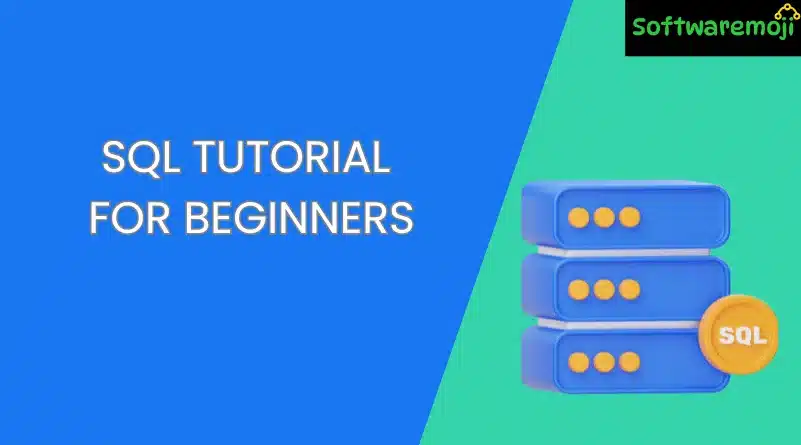
What is SQL?
SQL Tutorial for Beginners: (Structured Query Language) is the standard language for managing and manipulating relational databases. It allows users to insert, update, delete, and retrieve data efficiently. SQL is widely used in databases like MySQL, PostgreSQL, SQL Server, and Oracle.
SQL Full Form:
SQL stands for Structured Query Language and is pronounced either as “S-Q-L” or “See-Quel.”
Why Learn SQL?
SQL Tutorial for Beginners: SQL is essential for:
✅ Managing relational databases efficiently.
✅ Writing queries to filter and extract data.
✅ Creating, modifying, and deleting databases and tables.
✅ Optimizing database performance.
✅ Enhancing data security and access control.
SQL Syntax & Code Example
A simple SQL query to retrieve data:
SQL
SELECT * FROM Members WHERE Age > 30;
SQL syntax is mostly standard across different database management systems (DBMS), but some variations exist in MySQL, PostgreSQL, and SQL Server.
Types of SQL Statements
SQL Tutorial for Beginners: SQL commands are categorized into five major types:
1️⃣ Data Definition Language (DDL)
Used to define and modify database structures.
Commands: CREATE, ALTER, DROP, TRUNCATE
2️⃣ Data Manipulation Language (DML)
Handles data manipulation inside tables.
Commands: INSERT, UPDATE, DELETE
3️⃣ Data Query Language (DQL)
Used to fetch data from the database.
Commands: SELECT
4️⃣ Data Control Language (DCL)
Controls database access and permissions.
Commands: GRANT, REVOKE
5️⃣ Transaction Control Language (TCL)
Manages transactions in SQL databases.
Commands: COMMIT, ROLLBACK, SAVEPOINT
List of Common SQL Commands
| Command | Description |
| CREATE | Creates a database or table |
| INSERT | Adds new records to a table |
| UPDATE | Modifies existing records |
| DELETE | Removes records from a table |
| SELECT | Retrieves data from the database |
| DROP | Deletes a table or database |
SQL Process: How Queries Work?
SQL Tutorial for Beginners: When you run an SQL query, the SQL engine processes it through:
✅ SQL Query Engine – Parses the query and prepares execution.
✅ Optimization Engine – Improves efficiency of query execution.
✅ Query Dispatcher – Routes queries to the right database.
✅ Classic Query Engine – Handles non-SQL queries if required.
SQL Standards & Versions
SQL Tutorial for Beginners: SQL is an ANSI (American National Standards Institute) standard, with periodic updates:
📌 SQL-86 – First official standard.
📌 SQL-92 – Introduced JOIN operations.
📌 SQL:1999 – Added triggers and procedural features.
📌 SQL:2003 – Introduced XML support.
📌 SQL:2011 – Improved temporal databases.
SQL vs NoSQL: Key Differences
| Feature | SQL (Relational DB) | NoSQL (Non-Relational DB) |
| Structure | Tables with rows and columns | Document, key-value, graph, wide-column |
| Schema | Fixed schema | Dynamic schema |
| Query Language | SQL | No fixed language (varies by database) |
| Scaling | Vertical scaling | Horizontal scaling |
| Transactions | ACID-compliant | BASE model (relaxed consistency) |
Example SQL Databases: MySQL, PostgreSQL, SQL Server.
Example NoSQL Databases: MongoDB, Cassandra, Redis.
Best SQL Books for Learning
SQL Tutorial for Beginners: SQL for Beginners – Covers fundamental concepts.
📖 SQL in 10 Minutes – A quick crash course.
📖 SQL Cookbook – Real-world problem-solving with SQL.
📖 SQL Pocket Guide – Handy reference for SQL syntax.
Final Thoughts & Key Takeaways
✔️ SQL is essential for working with relational databases.
✔️ It includes DDL, DML, DCL, TCL, and DQL commands.
✔️ SQL supports data security, optimization, and transactions.
✔️ NoSQL databases are flexible but lack strict ACID compliance.
✔️ Learning SQL is valuable for developers, analysts, and data scientists.
Start Learning SQL Today & Master Database Management!
This version is SEO-friendly, structured well with headers, bullet points, tables, and keywords, and provides detailed information for users searching for SQL basics. Let me know if you need any modifications!
